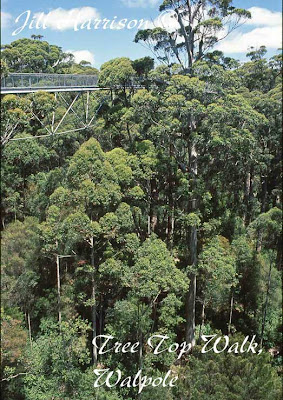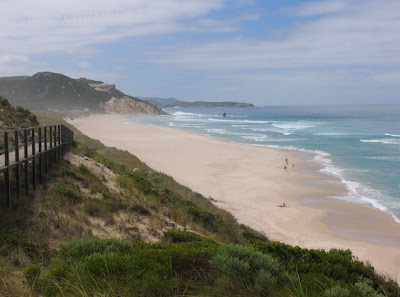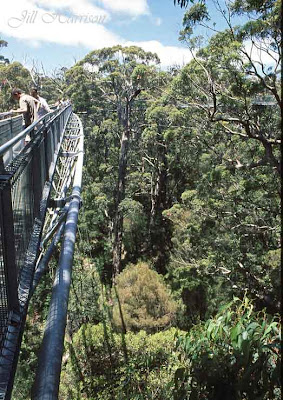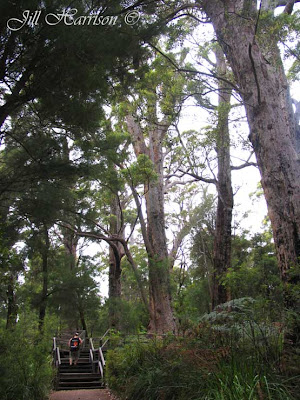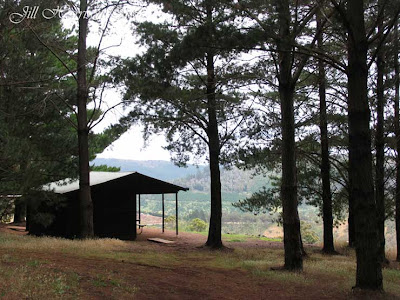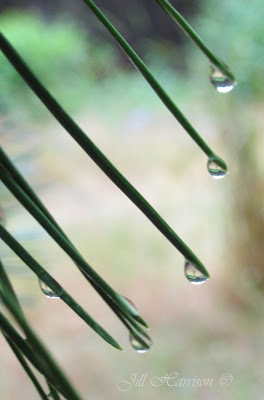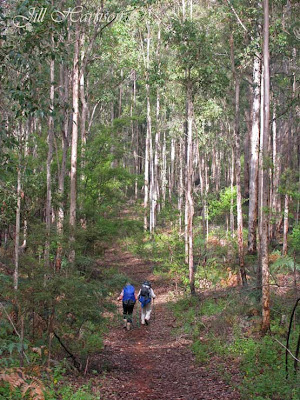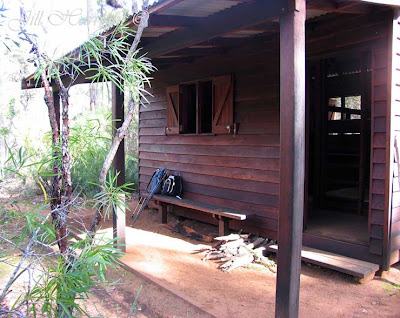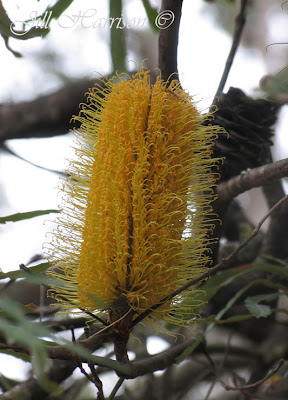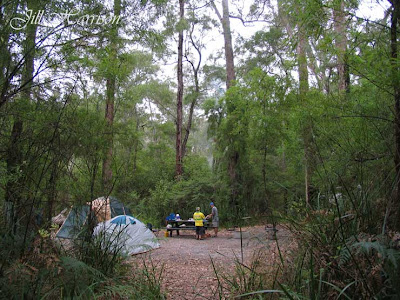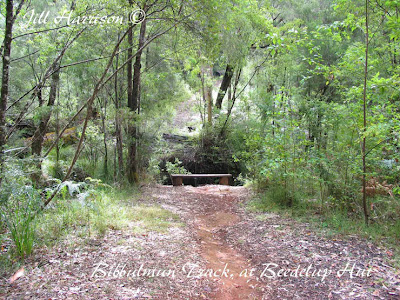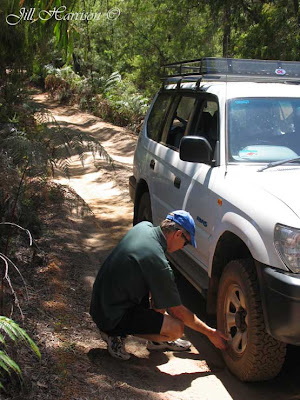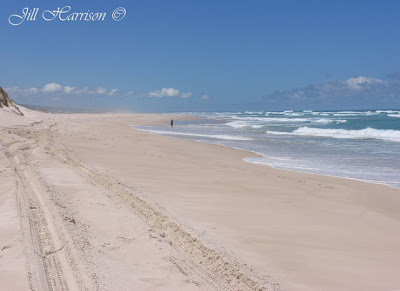Welcome to Week 10 of our 52 week tour around Western Australia.
This week we move away from the coast and go inland to camp on the banks of the Warren River amongst the towering Karri trees of the Warren National Park just south of Pemberton, Western Australia. It’s only a few hours drive to get here from our home in Bunbury, but we could be thousands of miles from anywhere, it is so utterly peaceful.
Pemberton is an all year round destination set deep in the Karri forest of the spectacular Southern Forests region 335 kilometres from Perth. It is an ideal central base from which to explore all that the south west corner of Western Australia has to offer.
First settled in1861 by Edward Brockman (son of Perth’s first mayor, one of the original Swan River Colony settlers) and his wife Capel Bussell (daughter of John Bussell, the original Busselton settler), Pemberton was established as a milling town in 1913 with an order to supply half a million railway sleepers for the Trans-Australian Railway.
Today Pemberton’s tourism centres around its forests. If you enjoy bushwalking there are many walk trails in the five National Parks that are in close proximity to Pemberton - Gloucester, Warren, Beedelup, D’Entrecasteaux and Shannon. Scenic drives, canoeing, fishing and 4 wheel driving are also on the agenda, and for a change of pace there are a growing number of artist galleries, wineries, and restaurants specialising in fresh home grown produce. Or try your hand a fly fishing at the Trout and Marron farm.
Here is a photo of our camp for the next few nights. You can see my husband Rod and son Mark getting our breakfast ready.
Here we are driving through the spectacular towering Karri forests. Western Australia’s southern forests are dominated by Karri trees which grow only in WA’s wettest corner. Belonging to the eucalypt family, many of the South West’s Karri trees are over 400 years old and reach a maximum height of about 90 metres making them one of the tallest forest trees in the world. The Karri has a long straight trunk with smooth bark which changes colour as it matures and which it sheds each year. Interspersed with the Karri are Tingles, Jarrah, Marri, Bullich and Blackbutt and a stunning display of over 1500 wildflower species from September to November.
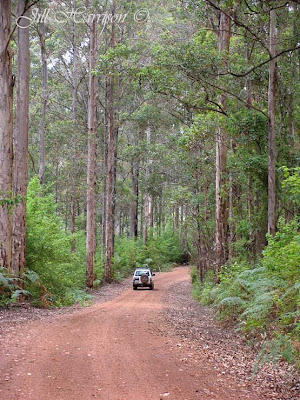 |
| |
In Pemberton there are many ways to enjoy the Karri forests. The most popular is to climb the Gloucester Tree, just three kilometres from Pemberton or the Dave Evans Bicentennial Tree in the Warren National Park. Gloucester Tree is one of eight lookout trees built between 1937 and 1952 for spotting fires in the forest, whilst the Bicentennial was pegged in 1988 as part of the Bicentennial celebrations. Thousands of visitors go here every year to climb to the viewing platforms and experience the spectacular views above the canopy. The lookout at Gloucester Tree is about 60 metres off the ground, while the Bicentennial lookout is more than 60 metres high, making it the highest treetop lookout in the world.
Here is a photo taken during our climb up Bicentennial Tree.
To really appreciate the forests, the Department of Environment and Conservation booklet “Pemberton Bushwalks” describes the great array of walk trails around Pemberton, including Beedelup National Park and Beedelup Falls, Big Brook Dam and Arboretum, Gloucester National Park, the Cascades, and Yeagerup Dunes, as well as walks at Northcliffe and Shannon. These walks allow you to be completely absorbed by the tranquillity, scents and sounds of the forest and can be enjoyed all year round.
Here is a photo of Lefroy Brook near the Cascades.
Here we are at beautiful Big Brook Dam just out of Pemberton. There is a walk track that is wheel chair friendly which goes right round the dam, a picnic area, and swimming beach (you can see the swimming beach and picnic area just there on the left hand side of the photo). Lovely on a hot summers day to cool off, and beautiful in spring to see the wildflowers. There are also bird hides around the dam from where you can observe the water birds.
This wildflower is call Clematis.
 |
| Clematis |
This is the slipper orchid, which we found along a walk trail along the Warren River near our camp site.
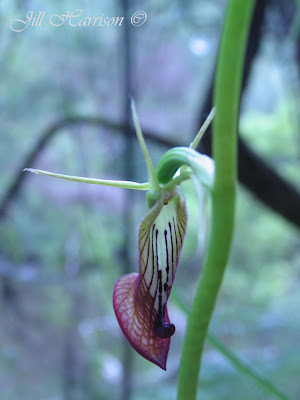 |
| Slipper Orchid |
After a day bushwalking, what a lovely place to sit by the river. This is at the Bibbulmun Track hut at Beedelup, not far from Pemberton. Pemberton is one of the "Track towns" of the Bibbulmum (walking) Track which goes from Perth to Albany.
From the Karri forests of Pemberton we drive south to the Yeagarup Dune system within the D'Entrecasteaux National Park on the south coast of Western Australia. Major rivers including the Warren, Donnelly and Shannon, drain through D'Entrecasteaux and empty into the Southern Ocean through here. High sand dunes and limestone cliffs on the sea coast give way to coastal heathlands and a series of lakes and swamps further inland.
One of its outstanding features is Yeagarup Dune, an impressive mobile dune 10 kilomtres long. The coastal winds whip the white sands into mobile dunes, which are constantly on the move - relentlessly moving forward covering lakes and overtaking forests in their path. The face of the dune is over 40 metres high. It is an amazing sight.
You need to lower your tyre pressures before tackling the four wheel drive track which takes you through Banksia tree woodlands, and past the Yeagarup Lake and Naenup swamp to the base of the sand dune. Once on the dune, follow the markers which show you the track across the dunes to the beach - about 8 kilometres.
In this photo you can see the face of the dune and how it is overtaking the woodland. The 4 wheel drive track moves over as the dune takes it over.
On top of the dune looking to the north away from the coast.
Here we are in sight of the coast.
For the fishermen amongst you, here is another, taken along Yeagarup Beach.
